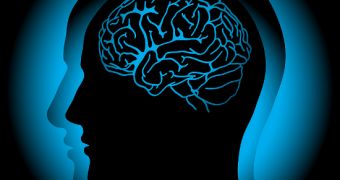Scientists with the University of Michigan are working on developing a new headpiece which they say has high chances to one day be used to treat depression in a faster and more effective manner.
In a paper published in this month's edition of the journal IEEE Transactions on Biomedical Engineering, the researchers detail that the headpiece they wish to roll out is basically a square array of 64 circular metallic coils.
Is it supposed to be used for brain stimulation, the scientists further explain.
According to EurekAlert, it was back in 2006 when the FDA approved the use of brain stimulation as a means to treat depression.
However, the devices presently in use only send signals at a depth of about 2 centimeters (0.8 inches) in the brain before the patient's scalp begins to contract in an uncomfortable, sometimes even painful way.
The weak electrical field generated by the headpiece the University of Michigan researchers are working on is expected to reach a depth of 2.4 centimeters (0.95 centimeters) without causing any serious discomfort.
What's more, the scientists working on this project say that it will be able to target more precise areas in the brain, in the sense that it would activate neurons located in certain carefully chosen regions without disturbing the rest of the brain.
“That improvement [i.e. the extra 0.4 centimeters] isn't marginal. This should open up a lot of opportunities to treat depression and other mental illness, as well as probe the brain,” specialist Eric Michielssen wishes to stress.
The researchers also say that, at some point in the future, it might be possible to use this headpiece to study the inner workings of the human brain in further detail.
“Our coils will enable neuroscientists to further understand brain function by achieving a finer resolution and stimulating regions deeper in the brain,” researcher Luis Gomez argues.
“It could help us figure out which way information flows inside neural networks, and ultimately understand how the brain works,” he adds.

 14 DAY TRIAL //
14 DAY TRIAL //